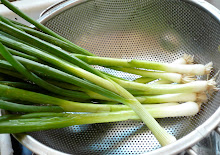Imagine that it’s late afternoon on the weekend. Your thoughts turn to dinner. “Don’t sweat it,” says your 11-year-old kid. “I’ll just whip up some fresh pasta. Ravioli sound good?”



Theo cooks regularly at home, where he and his younger brother are each expected to help prepare one dinner a week. Through the gardening and cooking program at his school, he has helped make dilly beans, potato leek soup, and cornbread. Theo even made culinary concerns the center of his campaign for student council: he promised that not only would he try to get more vegetarian meals on the school lunch menu, he would try to bring back chocolate milk. He won.
At some point Theo discovered the hand-crank pasta machine his parents got fifteen years ago as a wedding present. “Rolling out pasta is fun,” he says. “It’s like holding a snake.” Equally appealing is the machine itself. It requires assembly, hand-eye coordination, and, when making filled pasta such as ravioli, a willingness to collaborate. Theo works with his mom or dad to turn the crank, insert the already-rolled stretches of dough, and spoon or sprinkle in the filling. He does NOT cook with his younger brother. There would be too much yelling, he says.
Theo celebrated his birthday in the fall, and among his presents were a whisk and a hatchet. He is working on his scrambled-egg technique, his mom reports; hence, the whisk. But what’s the hatchet for? “Chopping stuff down outside,” he says with a shrug. Duh.
Fresh Egg Pasta (from The Joy of Cooking)
Theo’s family usually makes a half-recipe. They filled the ravioli with either grated smoked gouda cheese, mashed sweet potato, or a sauteed mushroom-spinach mixture. Theo prefers the straight cheese version.
3 1/2 c. flour
5 large eggs or 7 egg whites
1 tsp. salt
1 tsp. oil
Place the flour in a bowl, making a well in the center. Beat the eggs lightly with a fork, drawing in flour as you go, until the eggs are mixed in and slightly thickened. Knead into a cohesive dough. Let the dough rest for 30 minutes before using it with a pasta-maker, following whatever directions come with the machine.
Let the ravioli sit for 10 minutes. Cook them in boiling water until they float to the surface, about 3 minutes. Drain and toss with a little butter or olive oil or tomato sauce, and top with grated cheese.






























